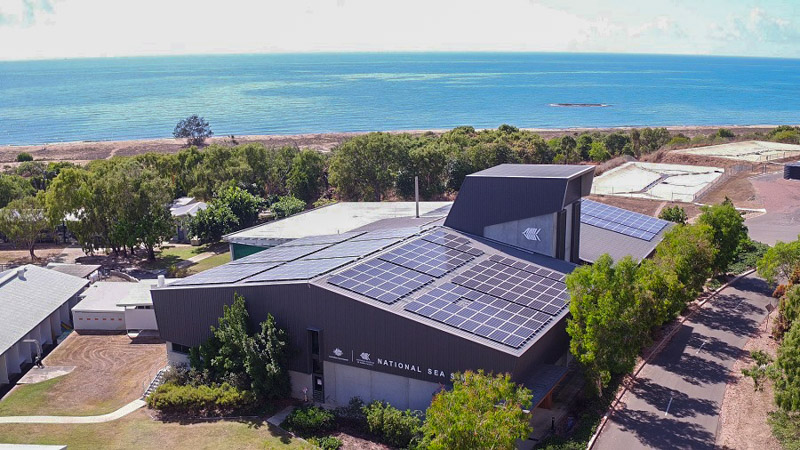An impressive $2.25 million solar system is now set to deliver a major savings at the Australian Institute of Marine Science’s headquarters near Townsville.
AIMS Chief Executive Officer Dr Paul Hardisty said as Australia’s tropical marine research agency, the focus was on delivering real outcomes in marine science.
“A significant proportion of AIMS’ research focuses on the impact of climate change on tropical marine ecosystems, so we wanted to lead the way in cutting our own emissions,” Dr Hardisty said.
Dr Hardisty said solar was being rolled out at the Institute’s sites across Australia, with solar already in place at AIMS’ Darwin-based research facility, while AIMS’ Perth facility is also preparing to switch to solar.
Dr Hardisty said the new system would generate an estimated 1000 kw per hour, reducing the Institute’s carbon footprint by 15%, or about 1500 tonne a year.
“We are working towards a 25% reduction in our own carbon emissions across all our three sites, and this is a big part of that process,” Dr Hardisty said.
“North Queensland is lucky to have more than 300 days of sunshine a year, which we have used for our energy requirements, and we plan to also look to wind generation for future savings.
“Not only does the system deliver environmental benefits, but it is forecast to deliver up to $400,000 a year in savings, which means we can put more money back into science.”
AIMS Chief Operating Officer Dr John Chappell said a major cost saving of switching to solar would be at the Institute’s National Sea Simulator, the world’s most advanced research aquarium, which can simulate, quantify and predict the effects of multiple pressures on marine and coastal ecosystems.

“The National Sea Simulator allows us to undertake complex research which was not previously possible anywhere in the world – including work on assessing the impact of complex environmental changes, and reef restoration,” Dr Chappell said.
“This investment in solar will help to reduce the recurrent cost of running this important research asset.”
The solar project was undertaken with a $1.8 million Australian Government investment in supporting science excellence, as part of the Public Service Modernisation Fund, announced in the 2017-2018 Federal Budget.







